Text
Greening IT: The Power of Data-Driven Decarbonization
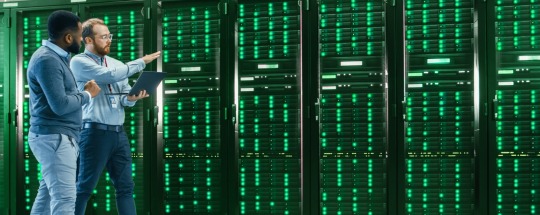
In the world of IT, the energy-intensive nature of IT and data center infrastructure presents a significant challenge to mitigating climate change. These data centers, which account for 2% of total U.S. electricity consumption, are responsible for a staggering 10 to 50 times the energy usage per square foot compared to conventional office buildings. As the demand for data continues to surge, projections indicate that power consumption in data centers will reach 35 gigawatts by 2030, doubling from 2022. This places organizations at the crossroads of managing growth and addressing their environmental footprint.
The journey towards a more sustainable IT future is not just an environmental imperative but a strategic one. It’s about making smart business choices that align with responsible ecological practices. Embracing green technologies and optimizing infrastructure efficiency can be a game-changer.
Innovations like battery energy storage systems, green software patterns, and the repurposing of infrastructure components contribute to reducing the carbon footprint. Data-driven decarbonization strategies further allow organizations to improve energy efficiency, benefiting the environment as well as the overall operations.

In this ever-changing landscape, the adoption of data center infrastructure management is becoming increasingly important. It offers better visibility and control over energy usage, which is crucial for building a sustainable IT strategy. Achieving sustainability is not a task that can be accomplished alone, but rather a collaborative effort that requires engagement with vendors, clear communication, and a shared vision.
Although the journey towards a green IT future may take a while, the long-term benefits of lower energy costs and a reduced environmental impact make it a journey worth pursuing.
Learn how Hitachi is powering a Green IT future
#sustainability#decarbonization#green it#sustainable IT#it solutions#green IT services#it services#it consulting
0 notes
Text
Embracing Sustainability: Hitachi’s Commitment to a Greener Future

In today’s world, recognizing our planet’s limits is vital. Hitachi, a climate change innovator, integrates sustainability into its core business strategy. With a focus on carbon neutrality and innovative solutions, Hitachi is working towards a more eco-friendly world. But tackling climate change is a collective effort. That’s why we support initiatives like the Earthshot Prize, bringing climate innovators together.
Striving for carbon neutrality, innovation is our driving force, and we believe in the synergy of a green and digital economy. By investing in both, Hitachi is accelerating the path to carbon neutrality. Through data-driven insights, digital engineering, and collaborative public-private partnerships, Hitachi is leading the way to a sustainable future.
Join us in building a greener, more environmentally friendly world. Read more on Hitachi’s Commitment to Carbon Neutrality and Sustainable Solutions
#sustainability#decarbonization#sustainable mobility#sustainable transport#green innovation#digital innovation#digital engineering#green technology#digital technology#carbon neutral#zero emissions#green energy#green mobility
0 notes
Text
One Heartbeat at a Time: MedTech and Engineering Services Save Lives

In the United States, sudden cardiac arrest (SCA) claims the lives of 436,000 people annually, with over 350,000 incidents occurring outside hospitals. Addressing this urgent need, Kestra Medical Technologies introduced the ASSURE® Wearable Cardioverter Defibrillator (WCD), a revolutionary solution for at-risk cardiac patients.
Partnering with GlobalLogic, a Hitachi Group company, Kestra developed the ASSURE cardiac care and recovery system, a digital cardiac monitoring system comprising the ASSURE WCD, patient app, and Kestra CareStation™ remote patient data platform.

Designed for comfort and safety, the ASSURE system offers seamless protection. Nearly 74 percent of out-of-hospital cardiac arrests occur at home, making the ASSURE system’s continuous remote patient monitoring vital. This wearable system autonomously detects abnormal heart rhythms and administers therapeutic defibrillation shocks when necessary, without requiring patient or bystander intervention.
Kestra’s partnership with GlobalLogic resulted in a user-centric system with lightweight garments featuring ECG sensors and therapy pads. The ASSURE app empowers patients, encouraging engagement in their recovery process. Moreover, this digital cardiac monitoring system equips clinicians with valuable insights into patient heart rhythms, enhancing mobile patient monitoring.
Recognized with the Medical Design Excellence Award, the ASSURE system, available to over 100 million insurance plan members in the U.S., represents a significant leap in digital healthcare. The partnership between Kestra and GlobalLogic exemplifies the power of innovation in revolutionizing MedTech.
With a commitment to continuous improvement and patient empowerment, Kestra’s cutting-edge technology is shaping the future of mobile healthcare.
Discover how Kestra Medical Technologies and GlobalLogic joined forces to introduce the breakthrough ASSURE® Cardiac Recovery System to provide life-saving cardiac care and recovery
To learn how GlobalLogic can provide you with a cost-effective, scalable, highly competent and quality process-compliant software engineering product development team, visit
https://www.globallogic.com/services/industries/healthcare-life-sciences/.
#cardiac care#cardiac recovery#heart attack#medical technology#cardiac rehabilitation#cardiac health#remote patient monitoring#patient app#heart monitor#Wearable Cardioverter Defibrillator
0 notes
Text
Next Stop, Sustainability! — How Automated Trains Are Transforming Transportation.

In an age of stressful commutes and road congestion, a transformative solution has emerged: fully automated train systems. Hawaii’s H-1 freeway, notorious for its traffic jams, has found relief in the form of the Skyline, the U.S.’s first fully automated elevated rail system, operational since June 30, 2023. This breakthrough innovation represents a global shift toward autonomous mass transit, exemplifying Hitachi’s expertise.
Automated trains offer enhanced safety, relying on algorithms and sensors for real-time monitoring, minimizing human error and accidents. Their eco-friendly impact is profound, emitting up to nine times less CO2 and particulate matter than road transport, contributing significantly to reducing greenhouse gas emissions. Additionally, these trains drive smart city investments, integrating seamlessly into data-driven infrastructures, ensuring faster travel times and energy-efficient operations.
Toward Smarter Rail Mobility — The Hitachi Way
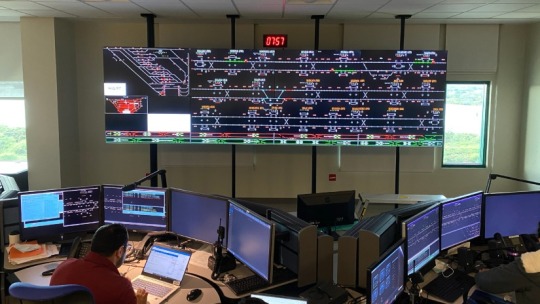
Hitachi Rail specializes in designing, building, and operating autonomous metro systems globally. One of its notable projects is the Cityringen metro in Copenhagen, which utilizes the advanced CBTC (Communication-Based Train Control) technology to enable automated train operations. This innovation has resulted in improved reliability, more frequent services, and shorter waiting times for passengers.
Smart rail imparts several benefits — passengers can enjoy a seamless experience, from Wi-Fi connectivity to enhanced accessibility, making journeys more comfortable and convenient. By collaborating with governments and stakeholders globally, Hitachi ensures a thorough assessment of feasibility, required infrastructure upgrades, and effective engagement with stakeholders.
Ready to embark on this transformative journey? Learn how Hitachi is connecting the future of mobility.
Discover how Hitachi is ushering in a green mobility future by leveraging its expertise in digital and transportation technologies
#automated trains#autonomous trains#driverless rail#train control center#HART#skyline#sustainable transport#sustainable mobility#decarbonization#smart rail#hitachi rail#rail transportation#sustainable railway#honolulu
0 notes
Text
How Electrification is Redefining Commercial Transportation
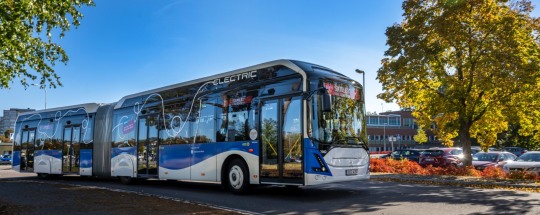
The global transportation industry has long faced a daunting challenge: balancing the necessity of transportation with the environmental impact of carbon emissions and air pollution. However, a transformative change is on the horizon — a shift toward fleet electrification that promises a cleaner, greener future.
Trucks and buses, constituting less than 8% of vehicles on the road, contribute over 35% of direct CO2 emissions from road transport. This alarming statistic has propelled nations into action. Twenty-seven countries have committed to a 30% reduction in emissions from medium and heavy-duty vehicles by 2030. Simultaneously, a nine-nation group aims for 100% zero-emission trucks and buses by 2035.
The transition to electric buses and trucks presents challenges in pricing, operations, and infrastructure. However, significant progress has been made. In 2022, nearly 66,000 electric buses and 60,000 medium- to heavy-duty trucks hit the roads worldwide, reflecting a growing trend. Battery technology advancements have played a pivotal role, enabling longer driving ranges and operational efficiency. As lithium-ion battery prices continue to drop, fleet electrification is becoming not only environmentally friendly but also economically viable.
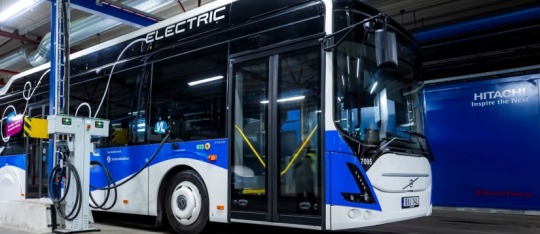
Hitachi, a global leader in transportation solutions, is at the forefront of this electrification revolution. Partnering with organizations like the Réseau de transport de la Capitale (RTC) in Quebec, Hitachi is providing innovative solutions like the Grid-eMotion® Fleet, an integrated charging system designed to fit the needs of existing urban garages. This technology not only reduces the space required for large-scale EV fleet charging but also simplifies the deployment of electrification infrastructure.
As the world races toward carbon neutrality, fleet electrification is crucial for a sustainable mobility future. With technology partners like Hitachi, the vision of a cleaner, greener transportation industry is steadily becoming a reality.
Learn how transportation electrification can reshape the future of bus and truck fleets
Discover how Hitachi is ushering in green mobility for a smarter, sustainable planet
#electrification#electric vehicles#fleet electric vehicles#electric buses#commercial fleet electrification
0 notes
Text
Crafting Healthcare Excellence with SaMD

In the rapidly advancing digital healthcare realm, one of the most exciting developments is the rise of Software as a Medical Device (SaMD). This innovation is revolutionizing patient care for millions worldwide, offering a more convenient and cost-effective approach to healthcare.
SaMD, as defined by the International Medical Device Regulators Forum (IMDRF), refers to software intended for medical purposes that operates on mobile phones, tablets, and computers. They aid in diagnosis, screening, monitoring, and treating various physiological conditions, covering a wide range of patient needs, from diabetes management to cloud-based solutions offering crucial insights to clinicians.

With time, there has been a significant shift in medical device functionality. SaMD applications have benefited from advancements in software engineering, enabling the integration of third-party hardware and software. This integration optimizes patient care, making it more efficient and cost-effective. Additionally, SaMD applications adhere to rigorous regulatory standards, ensuring safety and efficacy.
SaMD applications often take the form of patient engagement applications or patient companion apps that serve as the patient’s primary link and point of interaction with the medical device system. Patient companion apps have become integral in managing chronic health conditions and supporting remote patients.
For instance, diabetic patients can now effectively manage their glucose levels through integrated systems that include wearable insulin pumps, Continuous Glucose Monitors and Cloud Analytics, all accessible through a patient companion application.
As the world embraces digital healthcare, SaMD patient companion apps are increasingly becoming indispensable for companies striving to achieve their clinical and operational goals and ensure a future where healthcare is patient-centric and accessible.
Discover how GlobalLogic, a Hitachi group company, utilizes its digital engineering expertise to help Medtech companies businesses in creating Software-as-a-Medical Device (SaMD) apps
https://social-innovation.hitachi/en-us/think-ahead/healthcare/transforming-healthcare-with-software-as-a-medical-device-patient-companion-app/
#patient engagement app#patient care#remote patient monitoring#advanced healthcare analytics#healthcare innovation#cardiac care#cardiac recovery#patient app#patient experience
0 notes
Text
Smart Manufacturing In the Digital Age

In today’s age of industrial automation, the buzz around digital transformation (DX) is undeniable. According to Gartner, 80% of manufacturing CEOs are increasing investments in digital technologies such as AI, machine learning, IoT, and data analytics, aiming to navigate economic challenges and propel growth. Yet, only 8% claim success in their digital endeavors. What’s the missing link? It’s not technology but organizational readiness that often falters.
Manufacturers embarking on this digital transformational journey must heed vital principles. Cross-functional digital transformation teams, spearheaded by smart manufacturing operations, blend expertise from engineering, supply chain, and material operations. IT becomes the linchpin, ensuring data’s reliability and security, essential to fuelling data-driven manufacturing.
Data demands strategic handling. Centralization ensures a singular truth source, while targeted collection tailored to specific manufacturing challenges optimizes resources. Equally crucial is democratizing data, delivering pertinent information to individuals — from operators to maintenance leaders — empowering precise decision-making.
However, technology’s human element cannot be ignored. HR plays a pivotal role, bridging generational gaps and ensuring everyone understands the purpose and benefits of digital transformation. Financial realism is equally paramount; ongoing costs, often underestimated, necessitate meticulous accounting to prevent implementation hurdles.

Above all, leadership must champion this shift, preserving the company’s ethos. By fostering a culture of decentralized, data-driven decision-making, organizations can harmonize tradition with technology. As we tread the path to digitalization, JR Automation, a Hitachi Group company stands as a beacon, guiding industries worldwide toward a future where innovation and tradition coexist seamlessly.
In summary, cross-functional teams, IT partnerships, HR support, and visionary leadership are critical to achieving a seamless and culturally aligned transition and ensuring the success of digital transformation initiatives in manufacturing.
Explore the surprising factors that drive successful digital transformation in manufacturing and best practices for overcoming organizational hurdles and harnessing cross-functional teamwork to maximize data-driven decision-making.
Discover how Hitachi is enabling data-driven manufacturing automation to achieve sustainability and profitability
#smart manufacturing#smart factory#industry 4.0#industrial digitalization#digital transformation#sustainable manufacturing#manufacturing digitalization#sustainability
0 notes
Text
Data-Driven ESG Compliance: Challenges, Opportunities, and Best Practices

In the wake of a recent Supreme Court decision on affirmative action, concerns arose about potential challenges to environmental, social, and governance (ESG) strategies. However, ESG isn’t just political; it’s fundamentally good for business. Research shows a positive correlation between ESG performance and financial value creation.
At Hitachi America, Ltd. R&D, we’re actively co-creating sustainable digital solutions, committed to decarbonizing our operations and achieving global carbon neutrality in our value chain by 2050.
Despite the positive trajectory, challenges persist. Accurate ESG data is crucial, yet its availability and quality often hinder sustainable investment adoption. Regulatory concerns also loom, with worries that ESG regulations might limit business options. Additionally, smaller and minority-owned firms, while willing, struggle to incorporate ESG due to financial constraints.
To navigate these challenges, a holistic data-driven approach to ESG is essential.
Creating comprehensive audit trails around data ensures measurable ESG decisions throughout supply chains.
Standardized, globally coordinated ESG disclosure standards are vital, helping investors and stakeholders make informed decisions.
Companies must integrate ESG directly into their operations, making it a part of their core strategy.

Hitachi’s Take on ESG and Sustainability
Hitachi is actively working to facilitate the adoption of ESG practices, believing in the transformative power of sustainability. ESG-focused investments are on the rise, indicating a shifting paradigm in investment strategies. In this dynamic environment, actionable ESG practices will be instrumental, in guiding organizations toward a more sustainable future for all.
Learn how Hitachi is working to help companies make it easier to adopt and integrate ESG practices into their businesses.
https://social-innovation.hitachi/en-us/think-ahead/manufacturing/actionable-esg-compliance-for-businesses/
#sustainability#decarbonization#esg#esg reporting#esg data analytics#esg data management#esg investing#esg financing#esg strategy#esg compliance
0 notes
Text
Embracing the Era of Automated Warehouse Robots
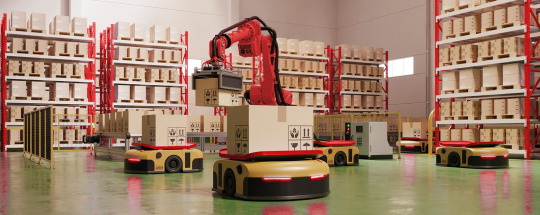
With a focus on warehouse automation and the implementation of cutting-edge mobile robotic solutions, Hitachi is revolutionizing the manufacturing landscape.
Central to this transformation is robotic palletizing, where advanced robots take charge of precise and efficient stacking of goods. This automation streamlines warehouse operations, optimizing productivity and minimizing errors.
Hitachi's expertise extends to logistics automation, incorporating robotic sorting and warehouse picking technologies. These robotic systems facilitate seamless order fulfillment, ensuring faster and error-free processes. By harnessing intelligent warehouse technology, Hitachi enhances overall inventory management, enabling accurate and efficient warehouse sorting. To further elevate efficiency, Hitachi has developed automated warehouse robots tailored for logistics tasks. These robots navigate warehouse spaces, facilitating smooth transportation and handling of goods.
Hitachi's dedication to excellence encompasses robotic inventory systems, harnessing the power of robotics and AI-driven technologies. These systems enable real-time tracking and monitoring of inventory levels, resulting in precise stock management and reduced discrepancies.
Hitachi's logistics and warehouse automation solutions encompass robotic depalletizing and palletizing solutions, warehouse picking, robotic warehouse sortation systems, automated guided vehicles and autonomous mobile robots.
Through these cutting-edge advancements, Hitachi is driving the future of warehousing, propelling it toward efficient, accurate, and technologically advanced operations.
Learn more on how scalable mobile robotic solutions manage the picking, sorting, and palletizing, making warehouse operations more efficient, cost-effective and safe:
Discover how Hitachi is enabling data-driven manufacturing automation to achieve sustainability and profitability:
#warehouse automation#warehouse robotics#logistics automation market#warehouse robots#warehouse technology#digital innovation#robotics#sustainability
0 notes
Text
Empowering a Sustainable Future with Green Energy and Electric Mobility

Hitachi is at the forefront of sustainable electrification, forging a path towards a greener future. With a strong commitment to accelerating the adoption of electric mobility, Hitachi is dedicated to electrifying the world sustainably by harnessing the potential of digitalization in the energy industry.
One of the key pillars of Hitachi's sustainable electrification efforts is the implementation of smart grids. These intelligent systems enable the efficient integration of renewable energy sources into the power grid, ensuring a smooth transition toward a cleaner energy mix.
By leveraging smart grid technology, Hitachi is optimizing energy distribution, enhancing grid reliability, and minimizing environmental impact.
Hitachi, the climate change innovator, is actively promoting the widespread adoption of electric vehicles. By developing advanced charging infrastructure and collaborating with industry partners, Hitachi is accelerating the shift towards clean transportation.
To enable effective management of energy resources, Hitachi offers smart energy management solutions that leverage data analytics and artificial intelligence to optimize energy consumption, monitor and control energy usage in real-time, and empower users to make informed decisions about their energy consumption patterns.
By driving digital transformation in the power and utilities industry, Hitachi is combining data-driven technology with its deep operational expertise in energy infrastructure systems to transition toward a more sustainable and electrified future.
Read more on how Hitachi is simplifying renewable energy integration by leveraging its IT & OT expertise to create sustainable and smarter power grids that can drive electric vehicle adoption and pave the way for a green energy future:
https://social-innovation.hitachi/en-us/think-ahead/energy/electrifying-the-world-sustainably/
Explore how Hitachi is driving a green energy future by leveraging its digital transformation capabilities to enhance sustainability in the utility sector:
https://social-innovation.hitachi/en-us/think-ahead/energy/
#smart energy#smart grid#renewable energy#green energy#decarbonization#sustainability#electric transportation#electric vehicles#sustainable mobility
1 note
·
View note
Text
The Blueprint for Building a Smarter Power Grid

To address the rise in CO2 emissions in the U.S., many states have developed greenhouse gas reduction goals. Addressing emissions and ensuring a reliable electric grid are crucial aspects of both societal and policy considerations, and fortunately, the necessary technologies for achieving these goals are readily available.
The integration of smart grid solutions, digital technologies and advanced analytics are needed to support a sustainable energy infrastructure. Hitachi is dedicated to sustainability and lowering greenhouse gas emissions.
Hitachi is actively implementing solutions to create a smarter, greener grid. They have collaborated with governments and private companies globally on projects utilizing high-voltage direct current (HVDC) technology, which offers a cost-efficient and environmentally friendly approach for transmitting electricity across long distances.
A comprehensive blueprint for building a greener grid can be possible by embracing renewable energy sources, smart energy solutions, and fostering collaboration – to mitigate climate change, reduce carbon emissions and ensure a cleaner and healthier future for all.
Learn more on how Hitachi is using green and digital technologies to build smarter, sustainable and resilient power grids:
https://social-innovation.hitachi/en-us/think-ahead/energy/a-blueprint-for-a-greener-grid/
Explore green energy innovations by Hitachi: https://social-innovation.hitachi/en-us/think-ahead/energy/
0 notes
Text
Driving Mobility Equity: Unleashing the Potential of Transportation Data Analytics

Data-driven solutions can address transportation inequalities and promote mobility equity. Hitachi wants to help society by developing new technology and products. This is important to make transportation fair for everyone. This mission related to transportation equity, must start by understanding data.
Data plays a crucial role in informing transportation policies, but underserved communities often face barriers to participating in data collection practices. This leads to biased and flawed data that doesn't accurately represent the entire population. To address this issue, data collectors need to understand the communities they survey and maintain a standardized approach that allows for frequent updates.
Public-Private Partnerships (PPP) can be utilized to facilitate transportation equity initiatives, as the private sector's financing capabilities can enable the use of impactful data-gathering technologies to enhance transportation accessibility, affordability and efficiency.
By leveraging data, Hitachi has been able to optimize route planning, improve connectivity and provide real-time information to users, ultimately enhancing the overall transportation experience. Meanwhile, data should be ethically collected, securely managed and continuously updated to ensure its relevance and accuracy.
Leveraging data can serve as a powerful tool in addressing mobility equity challenges. By analyzing and understanding the transportation needs of diverse communities, data analytics in transportation industry can help create inclusive, efficient and accessible transportation systems for all individuals, thus fostering social and economic equality.
Learn how Hitachi driving green mobility for a smarter, sustainable planet:
#sustainable transport#sustainable mobility#decarbonization#sustainability#data analytics in transportation
0 notes
Text
Transforming Commuter Experience: Enter a New Era of Rail Transit Control

Driven by surging population demands in California's San Francisco Bay Area, Bay Area Rapid Transit (BART) undertook a system revamp to cater to the growing need for efficient transportation. With an average of 405,000 trips made by BART riders, the outdated train control system prompted BART to prioritize safety, reliability and sustainability through modernization efforts.
BART partnered with Hitachi to implement their digital Communications-Based Train Control (CBTC) system, enabling flexible fleet management, expanding service capacity and introducing an energy-saving sleep mode capability.
What Is Communications-Based Train Control (CBTC) Technology?
Communications-Based Train Control (CBTC) is an advanced train control technology that uses wireless communication and computer systems to manage operations in rapid transit or subway systems, enhancing performance and reducing headway with a real moving block. Hitachi Rail offers a wide range of Railway and Mass Transit solutions, from fully integrated turnkey solutions to traditional signalling systems.

Benefits of Digital CBTC Technology
Enhanced safety - The precise train positioning and continuous communication of Digital CBTC ensure better collision avoidance, thereby enhancing passenger safety.
Increased capacity - Hitachi's digital CBTC system offers flexible fleet management capabilities to effectively boost the service capacity of the system.
Energy efficiency - With the CBTC system, BART can run 30 ten-car trains per hour in each direction through the Transbay Tube during busy times.
Create new jobs - Implementation of the solution is expected to create many new jobs.
Conclusion :
Hitachi is spearheading sustainable rail mobility across the USA and Canada, delivering the advantages of secure and effortless train travel to passengers, customers and communities.
Read More on how the partnership between Hitachi and BART is delivering social, environmental and economic benefits for generations to come:
Discover how Hitachi is leveraging green and digital innovation to drive digital transformation in manufacturing, energy, and transportation sectors among others, to create a social, environmental and economic impact:
#sustainable transport#sustainable mobility#hitachi rail#rail transportation#smart transportation market#smart rail#railway
0 notes
Text
Building a Green Business: Driving Sustainability and Profits

A green business is an environmentally responsible enterprise that embraces sustainable practices, green and digital technologies and fosters innovation for a sustainable future.
Building a Sustainable Planet for All: The Benefits of Building a Green Business
Building a green business is critical to realize decarbonization goals due to several key reasons:
Mitigating climate change: Green businesses are essential for combating climate change by reducing greenhouse gas emissions, particularly in the transportation sector.
Energy transition: Green businesses leveraging renewable energy sources can accelerate the shift to a low-carbon energy system, reducing carbon emissions from the energy sector.
Economic opportunities: Building green businesses creates economic opportunities through the transition to clean transportation and renewable energy systems, fostering innovation, job creation and economic growth.
Resource conservation: Green businesses prioritize resource conservation through sustainable transportation solutions like ride-sharing and energy-efficient technologies and practices in the energy sector.
How Hitachi Is Leveraging Green and Digital Innovation To Drive Sustainability?
Hitachi focuses on developing technologies, systems and processes for sustainable transformation in three key areas - green business, digital business and innovation - to enable companies to achieve sustainability goals.
The 3 Critical Growth Catalysts for Building a Green Business :
1. Develop and advance green business initiatives
To address greenhouse gas emissions, Hitachi has established a Green Energy & Mobility division, encompassing Hitachi Rail, Hitachi Energy and other energy divisions. Hitachi Energy prioritizes electric vehicle technologies and energy storage for greener transportation. Hitachi Green technology encompasses sustainable solutions, a circular economy and social benefits.
2. Leverage digital technologies
A successful green economy necessitates a robust digital economy, as digital technologies like AI and automation are instrumental in addressing global carbon emission reduction challenges. As a leading global digital technology innovator, Hitachi has developed multiple digital solutions across various industries that empower our customers to make better business decisions to reduce their carbon footprint.
3. Innovation
With its strong commitment to delivering innovative technologies that improve outcomes for people and the planet, Hitachi is a leading climate change innovator. For example, Hitachi Energy is enabling traditional power plants to generate and transmit energy from alternative and renewable sources, such as solar and wind.
Paving the Path for a Greener Economy
Collaboration between public and private entities, exemplified by Hitachi's partnership with a public utility in Washington state, enables businesses to embrace sustainability and unlock new possibilities - for the benefit of society at large.
Read More on the 3 Key Drivers to building your green business:
Discover how Hitachi is leveraging green and digital innovation to drive digital transformation in manufacturing, energy, and transportation sectors among others, to achieve social, environmental and economic impact:
0 notes
Text
Harvesting Sustainability: Transforming Agriculture Using Smart Technology

Cultivating Success: The Rise of the Smart Farmer
Agriculture is one of the world's largest industries, but it is under pressure. Climate change, fussy crops, weather extremes, market pressures, supply chain disruption and inadequate labor are putting farmers’ profitability at risk. Amidst these challenges, farmers must pioneer inventive ways to thrive. Next-gen automation holds immense potential in mitigating farming's climate impact and benefiting all stakeholders.
What is Smart Farming?
Smart farming optimizes agricultural practices by integrating the Internet of Things (IoT), artificial intelligence (AI), big data analytics and automation to enhance productivity, efficiency and sustainability.
Smart farming ensures:
Increased operational productivity
Reduced operational and energy costs
Healthier plants
Reduction in administrative work
Hitachi uses its expertise in digital technologies to implement smart farming systems to reduce the overall cost of producing and delivering food to consumers while improving environmental sustainability worldwide.
Technologies Driving Agriculture Automation
By leveraging AI, IoT and data analytics, Hitachi is revolutionizing farming, optimizing crop growth, resource management and overall agricultural efficiency.
For example, Hitachi’s digital lagoon monitoring helped a leading dairy farm to effectively manage its lagoon. The ability to take sensor data and combine it with other data sources and models enabled the farm to address environmental risks related to issues like overflowing lagoons, or animal health issues that could negatively impact the environment.
Hitachi has also worked with Australia’s Primary Industries and Regional Department to eliminate the weed problem that hinders farmers' work through a combination of image recognition, artificial intelligence, data analytics and satellite positioning to transform farming practices.
Hitachi works closely with its agriculture customers, blending solutions from its portfolio and the technology ecosystem to drive the Internet of Living Things to improve food security and environmental sustainability.
Canada’s largest provider of prepared meats and poultry is committed to both environmental sustainability and to creating efficient operations that maximize food production. Hitachi helped the company meet these goals with integrated digital technologies.
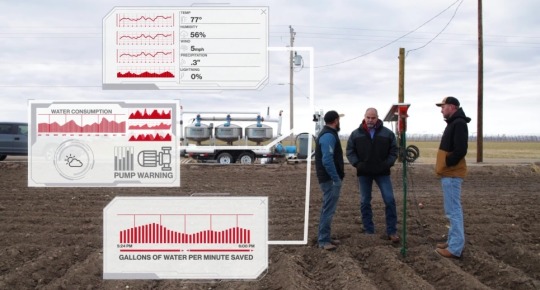
Leveraging Sustainable Digital Solutions to Automate Farming Processes: The Hitachi and Ag Automation
Hitachi and Ag Automation have collaborated to create a solution that enhances predictability in water usage for growers by leveraging data management and visualization technologies, allowing farmers to automate soil moisture data collection and remotely monitor and control irrigation systems, leading to improved crop management and increased yield. The Hitachi – Ag Automation partnership addressed farmers’ most daunting challenges, including:
Water scarcity
Lack of uniformity in crop sizes
Waste resulting from inefficient use of resources
High labor costs.
Ag Automation Reaps the Business and Environmental Benefits of Smart Farming
Soil moisture directly affects the size, uniformity, and quality of crops. But with weather and geographic variables in play, it’s also one of the most challenging factors to control. Hitachi and Ag Automation are making it possible for farmers to remotely monitor soil moisture levels and field irrigation requirements. By using transponders to monitor moisture and Hitachi VFDs to regulate irrigation flow, growers can easily detect and respond to events such as too much or too little pressure, pipe breaks and other issues.
In the words of Matt Foster, one of the co-founders of Ag Automation,
“Before automation, we drove roughly 400 miles a day to check on fields, pumps, equipment, soil moisture and probes in the field. Now we can check everything from the mobile app and spend our time where it needs to be rather than wasting it driving around.”
Read more on how Hitachi and Ag Automation are driving sustainability in farming:
https://social-innovation.hitachi/en-us/case_studies/digital-solutions-in-agriculture-drive-sustainability-in-farming/
Discover how Hitachi is driving digital transformation in manufacturing, energy, and transportation, among others, to achieve social, economic and environmental impact:
https://social-innovation.hitachi/en-us/think-ahead/
#smart farming#smart agriculture market#agriculture automation#sustainable food production#sustainability#digital technology#digital farming#smart farming solutions
0 notes
Text
Unleashing the Power of AI: Automotive Industry Embraces Predictive Maintenance for Efficiency
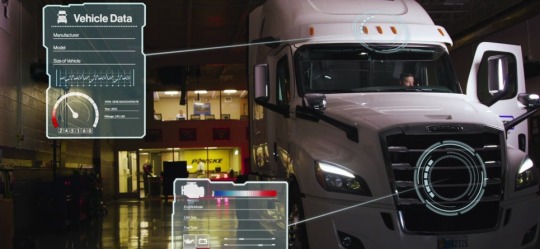
With the rising demand for efficient transportation and logistics, commercial fleet operators face growing pressure to meet complex demands and on-time deliveries to ensure customer satisfaction.
To stay competitive in the transportation industry and optimize business outcomes in vehicle performance, safety and security, implementing an intelligent fleet management system is vital.
With the rise of connected vehicles and real-time Internet of Things (IoT) data, artificial intelligence (AI)-driven solutions for predictive fleet maintenance and repair have emerged to address remote diagnostics and tackle potential issues.
What Is Automotive Predictive Maintenance?
Automotive predictive maintenance pulls IoT sensor data from individual vehicle components and external data sets, such as weather data, to analyze patterns and apply predictive AI and machine learning (ML) algorithms to optimize and automate overall vehicle maintenance. By applying AI to commercial fleet maintenance, vehicle owners can improve day-to-day operations by using predictive maintenance solutions to:
Enable real-time fleet optimization
Better understand asset performance
Maximize vehicle uptime
Optimize fleet scheduling and operations
Monitor asset health to improve safety and efficiency
Technology Innovation Born From Collaboration: Hitachi and Penske
Hitachi has always believed in strategic partnerships to accelerate the pace of transformation. To advance the vision of smart mobility, Hitachi leverages its expertise and capabilities in both digital and transportation technologies.
One such collaboration that has been instrumental in making the dream of sustainable transportation a reality is with Penske, which operates and maintains among the largest and most diverse fleet of trucks in North America. Hitachi and Penske worked together to develop an innovative solution called Guided Repair to troubleshoot mechanical problems and identify maintenance needs. It helped technicians respond quickly to diagnoses and recommendations to get vehicles back up and running.
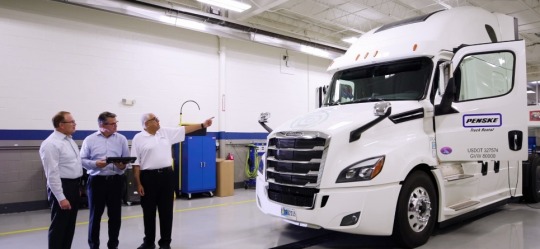
Unlocking Operational Insights on Fleet Performance
Hitachi's advanced AI and ML expertise expanded the existing Guided Repair model into Proactive Diagnostics, a predictive solution that monitors fleet vehicles and tracks anomalies to indicate future potential failures. This elevates customer satisfaction by ensuring that customers’ schedules are not interrupted — ensuring smooth supply chain operations, saving drivers’ time and extending the lifespan of assets.
Penske’s Transition From Preventive to Predictive Maintenance
Hitachi's technological expertise enabled the development of Proactive Diagnostics, revolutionizing fleet maintenance optimization and automation. By providing data archived over days and weeks and analyzing real-time fault code patterns, the solutions addressed Penske's challenge of maximizing the use of Connected Fleet data for predictive analysis of upcoming failures.
Over 100,000 vehicles in Penske's fleet currently benefit from the Proactive Diagnostics service, allowing technicians to service engine and telematic systems efficiently.
Read more on how Hitachi and Penske are raising the bar on automotive predictive maintenance:
https://social-innovation.hitachi/en-us/case_studies/proactive-diagnostics-for-enterprise-fleet-maintenance-and-repair/
Discover how Hitachi is ushering in green mobility for a smarter, sustainable planet:
https://social-innovation.hitachi/en-us/think-ahead/transportation/
0 notes
Text
Hitachi’s Innovative Power Transmission Technology Ensures Clean Energy for NY Homes

Making long-distance energy transfer a reality
Decarbonization goals require the government to work closely with the private sector to develop effective solutions for clean energy transmission. These public-private partnerships, such as the ambitious project in New York leveraging Hitachi’s high-voltage direct current (HVDC) technology, is essential if objectives at the state and local levels are to be achieved.
However, though emerging tools and technologies aim to reduce carbon emissions, the problem of electricity transmission has been a major obstacle. The project in New York is setting the bar for public-private partnerships in the energy sector with Hitachi’s unique technology and is making long-distance energy transfer a reality.
Renewable energy transmission to power New York
The state of New York’s Climate Leadership and Community Protection Act has set a target to be powered by 70% renewable energy by 2030^ . Historically, the state has been reliant on traditional and dispatchable energy sources like gas and coal. But most renewable energy sources must be held in reserve until needed. Accessing renewable energy on demand requires a means of storing power for later use.
Initially, the challenge was to find a suitable renewable power reservoir that was well-positioned for the transfer of renewable energy to and from the state. As Quebec relies mostly on hydropower generation, its infrastructure and capacity provided renewable energy storage capabilities to its neighbor. Next, an environmentally responsible means of bringing clean hydropower from Quebec to New York City was facilitated by Hitachi’s HVDC technology.
As the technology powers the Champlain Hudson Power Express (CHPE) link between Quebec and New York City, it deploys long distances underground and underwater, to bypass legacy transmission bottlenecks and meet the growing demand for clean power. Using Hitachi’s HVDC Light technology, CHPE will transfer up to 1,250 megawatts of electricity, enough to power 1 million New York homes.
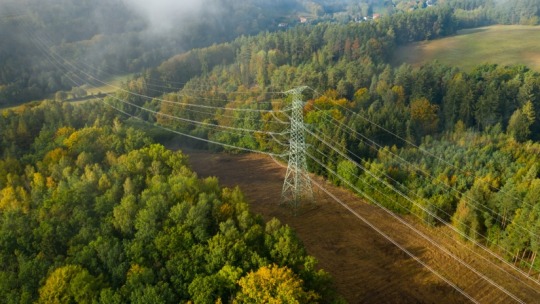
Hitachi’s HVDC for clean energy transmission
As a New York City mandate requiring the installation of electric appliances comes into force, demand for electricity in the city will grow. With HVDC Light’s ability to promote resource diversity to overall resource reliability, the CHPE system will be better equipped to meet the increase in electricity consumption.
HVDC Light further supports the state’s climate goals by maintaining a low environmental impact, and its converter stations likewise have a small carbon footprint. The CHPE project is expected to create 1,400 jobs from the construction phase, bringing $50 billion in economic benefits to New York state. The impact of the project is projected to be equal to removing 44% of passenger vehicles from the city. ^^
Hitachi’s work on the CHPE system reflects the company’s commitment to deploying technology to achieve social good by making it feasible to achieve critical sustainability goals.
Discover how Hitachi is driving social innovation and digital transformation in Energy:
Sources
^ https://www.governor.ny.gov/news/governor-hochul-announces-new-framework-achieve-nation-leading-six-gigawatts-energy-storage#:~:text=Today's%20announcement%20supports%20the%20Climate,zero%2Demission%20electricity%20by%202040.
^^ PA Knowledge Limited, “Champlain Hudson Power Express,” May 10, 2021, https://chpexpress.com/wp-content/uploads/2021/05/PA-Consulting-Tier-4-REC-Bid-Report_05-10-2021.pdf
#energy storage#power transmission#energy infrastructure#energy storage solutions#transmission solutions#energy transmission#transmission technology#electricity Transmission#electric power transmission#power transmission system#transmission capacity#renewable energy transmission#transmission infrastructure#power transmission solutions#HVDC technology#energy transmission system#clean energy transmission#green power transmission#energy transmission technology#innovative transmission technology#high-voltage direct current#long distance energy transfer#long distance power transmission#hvdc light transmission technology#sustainability
0 notes